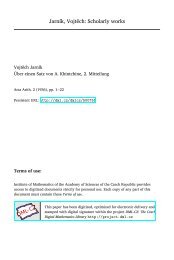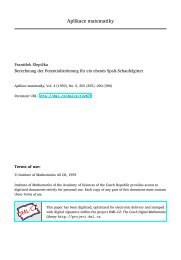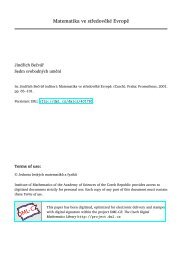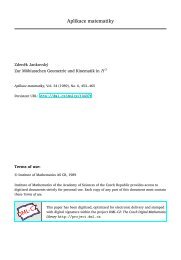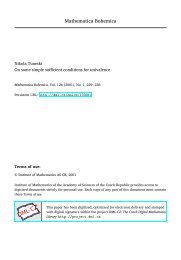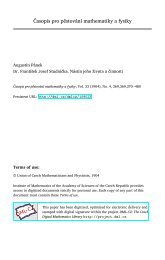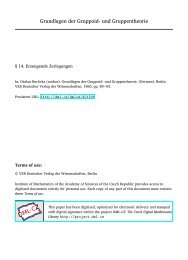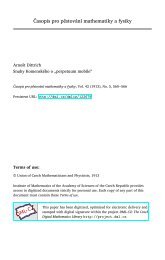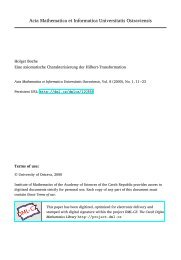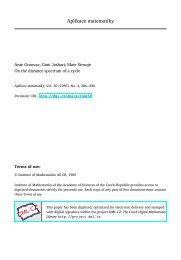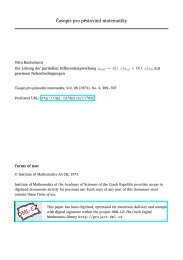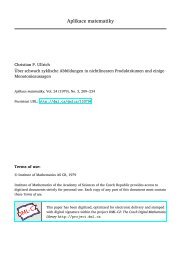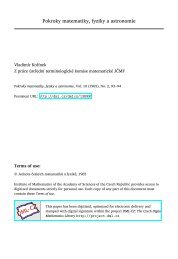Duality for generalized events
Duality for generalized events
Duality for generalized events
You also want an ePaper? Increase the reach of your titles
YUMPU automatically turns print PDFs into web optimized ePapers that Google loves.
ROMAN FRICZ<br />
2-chains does not admit any order determining family. M. Papco, at the<br />
SCAM-conference in Bratislava, April 2003 (cf. [25]), presented the construction<br />
of the product of ID -measurable spaces leading to the construction of the<br />
coproduct in the category ID . The latter yields the coproduct in the category<br />
PB.<br />
Let {Xs : s G 5} be a family of probs. Denote Hs = hom(X3,I) and,<br />
as a rule, identify Xs and its image evs(X3) C I Hs under the evaluation map<br />
evs: Xs -> I H *. Consider the product H = Y\ Hs and the prob I H . For t G S,<br />
s£S<br />
define a natural embedding nt of evt(Xt) = Xt into I H , sending u G Xt C I Ht<br />
to ut G I H defined as follows: <strong>for</strong> h = (h3; s G S) G H put ut(h) = u(ht), i.e.<br />
i/t depends only on the tth coordinate. It is a sequentially continuous D-poset<br />
morphism of Xt into I H . Let X C I H he the minimal subprob of I H which<br />
contains KS(XS), S G 5. If all involved probs are considered as ID objects<br />
and all PB morphisms are considered as ID morphisms, then (as shown by<br />
M. Papco) X, together with the coprojections {KS : Xs -» X : s G S}, is the<br />
coproduct of the family {Xs : s G 5} in ID .<br />
THEOREM 3.4. Let {Xs : s G S} be a family of probs. Then X, together<br />
with the coprojections {KS : Xs —> X : s G 5}, is the coproduct of the family<br />
{Xs: se S} in PB .<br />
Proof. The assertion follows directly from the definition of a coprodut and<br />
the fact that each prob and its image under the evaluation (via the set of all<br />
morphisms) are isomorphic. •<br />
4. Remarks<br />
The categories PB and MPB provide a tool <strong>for</strong> studying <strong>generalized</strong> probability:<br />
<strong>events</strong>, measures, random variables, observables. In [1], [2] (see also [15])<br />
the operational random variable is defined as a suitable map of the set of all probability<br />
measures on one measurable space into the set of all probability measures<br />
on another measurable space. If the map sends a point measure (an elementary<br />
event) to a nontrivial probability measure, then the random variable has a quantum<br />
nature. We claim that ID -measurable maps, and hence PB -measurable<br />
maps, generalize the operational random variables. Further, the duality between<br />
PB and SMPB covers the duality between operational random variables and<br />
the observables (going the opposite direction) as it is described in [1], [2]. We<br />
also claim that the sequential convergence and the categorical approach shed<br />
more light on the duality between the operational random variables and the<br />
observables.<br />
58



